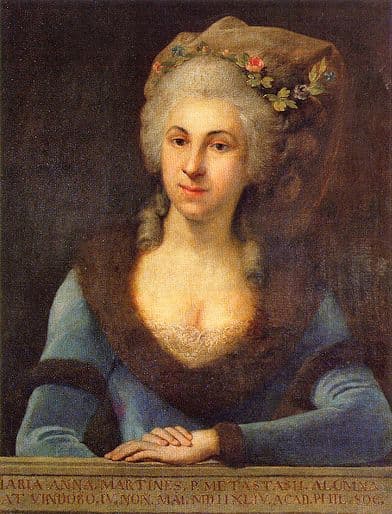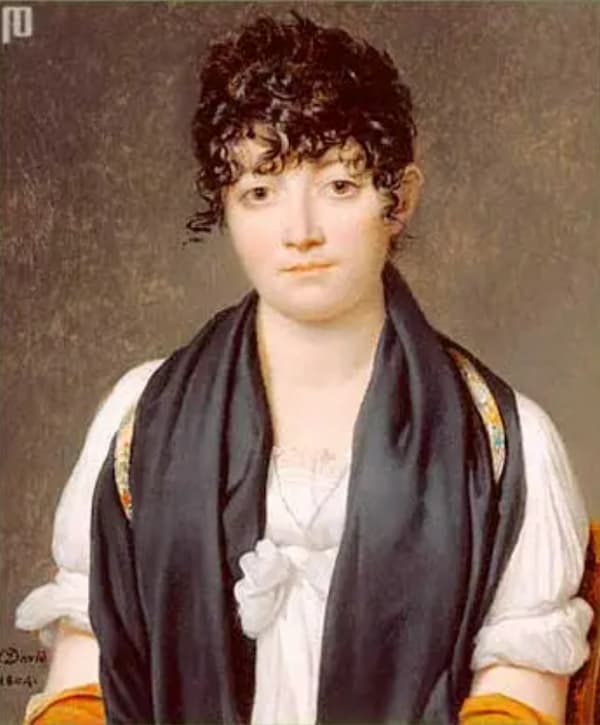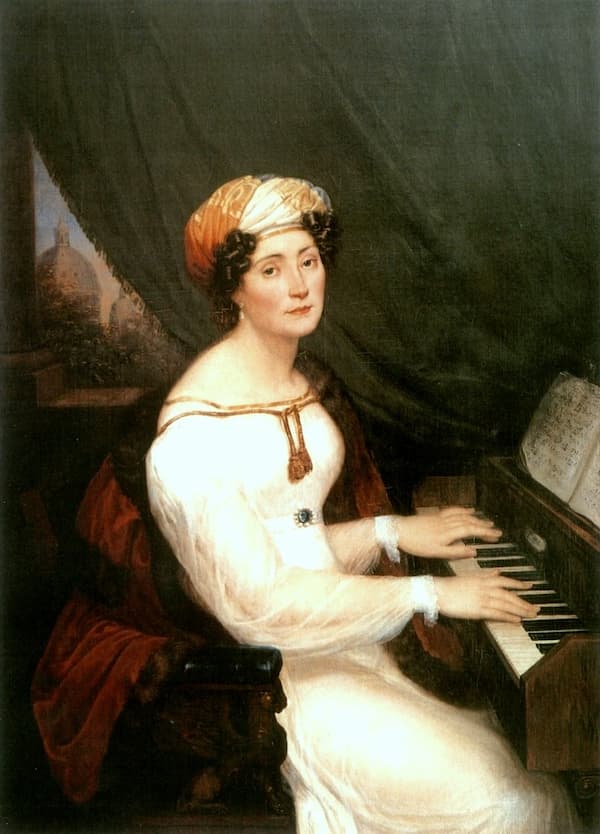Think about Classical Era composers and you might think of men in splendid attire wearing white wigs: men like Mozart or Haydn. But you might be surprised by how many classical era composers were actually women!
Most historians agree that the Classical Era began in the 1750s and didn’t give way to the Romantic Era until the 1820s or 1830s.
Obviously this was a time when professional opportunities for women were limited compared to the present day, but it was also a time when new ideas about what women could learn and accomplish had begun to take root.
There are many women who wrote great music during the Classical Era. Here are five of the most famous.
Marianna Martines (1744-1812)
Marianna Martines was born in 1744 in Vienna, Austria.
Importantly for Martines’s career and artistic development, her family lived with her father’s friend, the poet Metastasio, who was the Empire’s Poet Laureate.
Metastasio connected her with a poor young keyboard teacher living in the upstairs apartment named Joseph Haydn, who she studied with from the ages of seven to ten.

Marianna Martines
She received a fabulous and wide-ranging musical education from several great teachers and eventually began to sing for Empress Maria Theresa.
She became best known for her vocal performances and compositions and wrote many oratorios, cantatas, and choral works throughout her musical life.
It would have been unseemly for a woman of her social class to make money as a performer, so she made her money composing and teaching, and when her mentor Metastasio died, she inherited a portion of his estate.
Duchess Anna Amalia of Brunswick-Wolfenbüttel (1739-1807)
Duchess Anna Amalia was born in 1739 in Wolfenbüttel in present-day Germany.
When she was sixteen, she married the Duke of Saxe-Weimar-Eisenach. The following year, she had a son named Karl August. Shortly afterwards, her husband died, leaving her a widow and also her infant son’s regent.
As her son grew, she focused on making the court in Weimar intellectually and artistically brilliant. It became known as the “court of the muses” and hosted German cultural giants like Goethe and Schiller.

Duchess Anna Amalia of Brunswick-Wolfenbüttel
She somehow found time to write music herself, including harpsichord sonatas, vocal works, a symphony, and even two operas!
The most famous of the two operas was Erwin und Elmire, based on a libretto by Goethe, and composed in 1776, the year after her son reached his majority and she retired from the role of regent.
Maria Theresia von Paradis (1759-1824)
Maria Theresia von Paradis’s father was Imperial Secretary of Commerce and Court Councilor to the Empress Maria Theresa, and he named his daughter after his boss. When she was a toddler, she lost her sight, resulting in lifelong blindness.

Maria Theresia von Paradis
She was extremely musically gifted, and because of her family’s connections to the court, she received first-rate training in singing, keyboard playing, and composition. Her memory was astonishing: she was said to have sixty concertos memorised.
She went on tour to London and Paris in 1783, at the age of 24, and made a big impression. She even played piano concertos by Haydn and Mozart.
Later in life, she focused on composition herself, using a specially made composition board to write the music out. She wrote a wide variety of works, from piano sonatas to operas. Unfortunately, many of these works remain lost.
Louise Reichardt (1779-1826)
Unusually for the time, Louise Reichardt was born to two composers: both her mother and father wrote music. Her father and grandfather worked at the court of Frederick the Great.
Tragically, her talented mother died when Louise was just four. Her father became overwhelmed by his work and raising Louise and her siblings, so he didn’t spend much time teaching her music. However, she seems to have learned, anyway, and while she was still a child, he published works that included contributions by her.

Louise Reichardt
When she was a young woman, Reichardt struck out on her own to make a living in Hamburg, where she became a freelance musician, teacher and conductor of the Hamburg chorus. However, she never conducted publicly; conducting was seen as an unseemly activity for a woman.
She was most famous for her lovely lieder, which she wrote for the emerging middle-class market.
Maria Szymanowska (1789-1831)
Maria Szymanowska is sometimes referred to as the female Chopin, but since she was born before him, maybe we should think of Chopin as the male Maria Szymanowska!
She was born in Poland to a prosperous family. We don’t know much about her musical training or her early life, but we do know that she got married to a lawyer named Józef Szymanowski in 1810. They had three children together but were divorced in 1820.

Maria Szymanowska
Interestingly and unusually, her performing career began during her marriage, when she was a young mother. She toured through Europe and was extremely well-received. She made a final move to St. Petersburg in the late 1820s and died there in a cholera epidemic.
She wrote over 100 pieces for piano, many of them for the domestic market, a la Louise Reichardt.
Her music is right on the cusp of the transition between the Classical and Romantic Eras, and their uniquely Polish tinge predicts the nationalism that would appear in the piano music of Chopin and Liszt.
It’s a tragedy that she didn’t live longer, but it’s a joy to listen to the great music that survives.
For more of the best in classical music, sign up for our E-Newsletter



